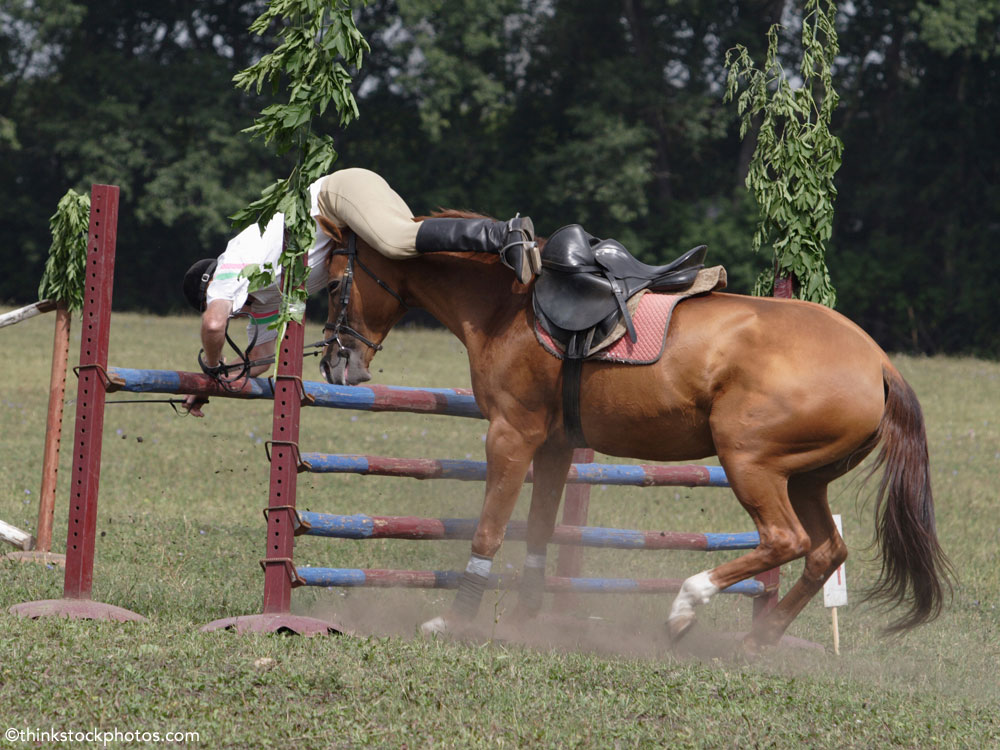
Now, all bets are off as to whether you can stay on.
The alarm sounds in your brain.
It’s official.
You are coming off your horse.
As riders, we know that falling is part of riding. No matter how experienced we are, and no matter how steady and bombproof our horse, things happen.
And it’s not just the higher-risk disciplines of eventing, show jumping and steeplechase that see rider falls. Reining and speed events have their share, as do pleasure riders in the arena and on the trail. Many accidents happen at the barn because we tend to let down our guard or have a false sense of security in our familiar surroundings.
According to the Fédération Equestre Internationale, about one in 250 riders at the top levels of eventing competition will have a rotational fall. The ratio for nonrotational falls is even higher.
If the ratio for falls is so high among these experienced, well-trained and talented riders, we normal riders likely have an even greater chance of falling.
But that doesn’t mean there’s nothing we can do but sit (er, ride) and wait for the next fall. There’s a lot we can do, and it starts with being a better rider.
Riding Position
Wendy Murdoch, a Virginia-based clinician and Feldenkrais practitioner, was badly injured in a fall. After her accident, doctors said she wouldn’t walk again.
Instead of accepting that outcome, Murdoch discovered ways to regain her mobility. Her teaching began from that foundation, and now is built upon the science of biomechanical movement and anatomy of horse and rider.
One of the biggest ways to improve the odds we won’t fall, or not as often, is to learn to ride from a place of softness and balance that allows our body to absorb the movement of the horse.
“A lot of western riders think that bracing their feet in the stirrups and pushing against the cantle will keep them safe and stable,” says Murdoch. “English riders will shove their heels down, bracing against the stirrups, for the same reason.” Gripping with the knees or thighs is another common defense mechanism.
The reality, however, is this position makes you much less stable. “Bracing creates a pivot point around which your body will rotate if you lose your balance,” says Murdoch.
Instead, we want to ride with hip, knee and ankle joints that are flexible and functional, not locked into one position.
Prepare
Murdoch strongly recommends taking lessons to help you learn to ride from a balanced and supple position. This will help you absorb the unexpected direction or speed changes that often precede a fall.
Any activity that takes us safely beyond our hard-wired human instinct to remain standing is helpful. In the sport of eventing, innovators have now come up with methods to teach riders to fall or roll in a safe environment.
Preparation Tips
Tack check: Every time you tack up, check that the girth is tight and that the billets and stirrup leathers are in good condition.
Gut check: Pay attention to any warning signs you sense or feel, and listen to that wise voice telling you not to do something. Don’t cave in to peer pressure, and be aware if you’re tired or stressed before making a decision to push on.
Gear check: Always wear an approved helmet (English and western versions are available), boots with heels, and seriously consider purchasing a safety vest.
During the Fall
After our inner alarm sounds and before we meet the ground, we have about 500 milliseconds to think and respond, according to Danny Warrington, founder of the LandSafe Reducing Rider Risk program.
In that span of time, we can aim for the dirt instead of the boulder. We can come off the uphill side of the slope so we aren’t crushed by our horse tumbling on top of us.
Or, as the LandSafe program teaches, we can launch ourselves away from our horse and put our body in a position to mitigate the impact and prevent serious injury.
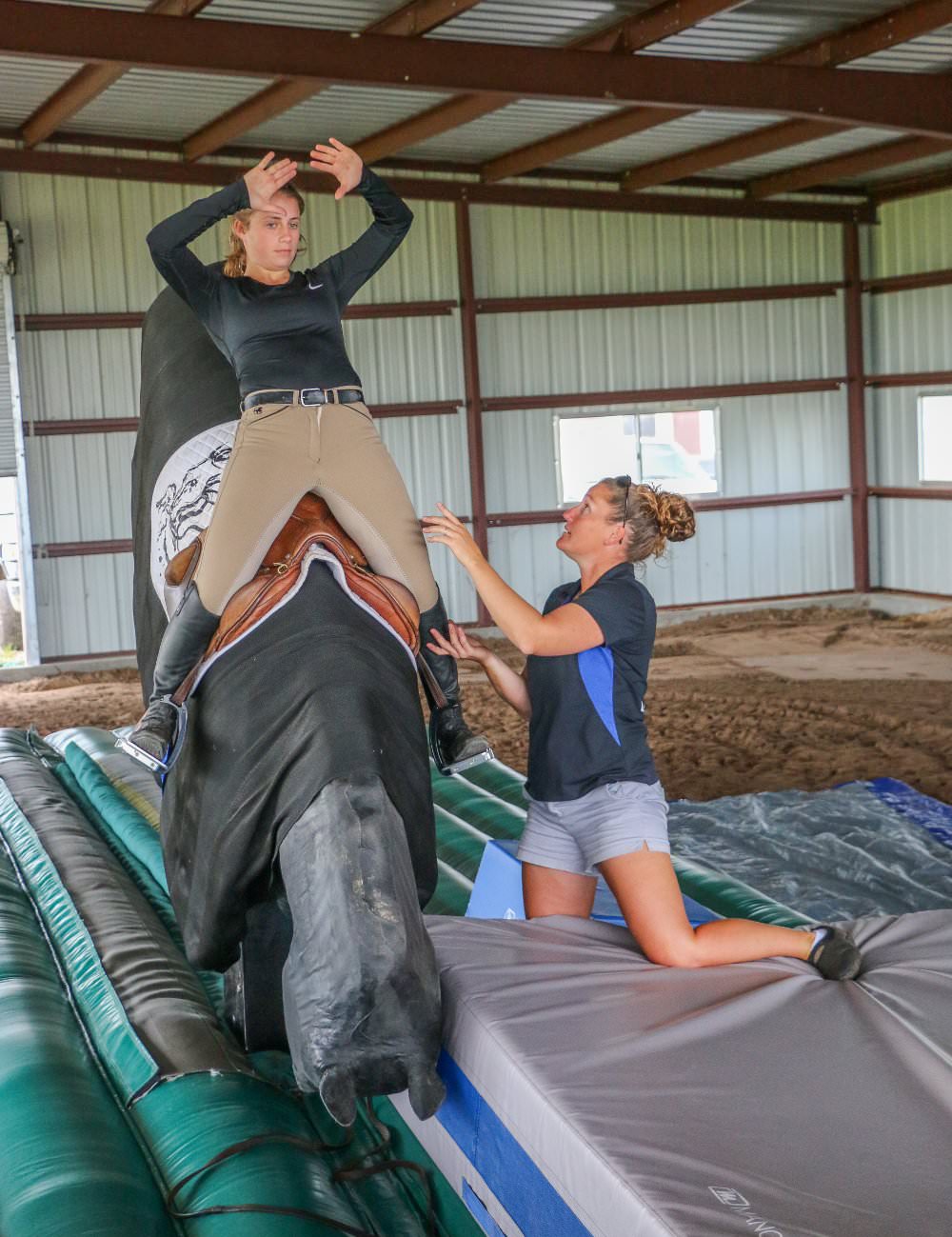
Introduced in December 2016 at the U.S. Eventing Association annual meeting, the LandSafe program was created by Warrington, a former steeplechase jockey and eventing rider, and his wife Keli, a nationally ranked gymnast who transitioned to eventing.
Beginning with a series of basic gymnastics moves and culminating in falls from a specially designed mechanical horse, the eight-hour basic program covers three aspects of learning to fall.
Brace: riders put their hands in a position that will help them start a roll when they contact the ground.
Look: riders look outside the dangerous circle of rotation—where the eyes go, the body follows.
Roll: when riders meet the ground, their hand and body position initiates the roll that protects their head and neck.
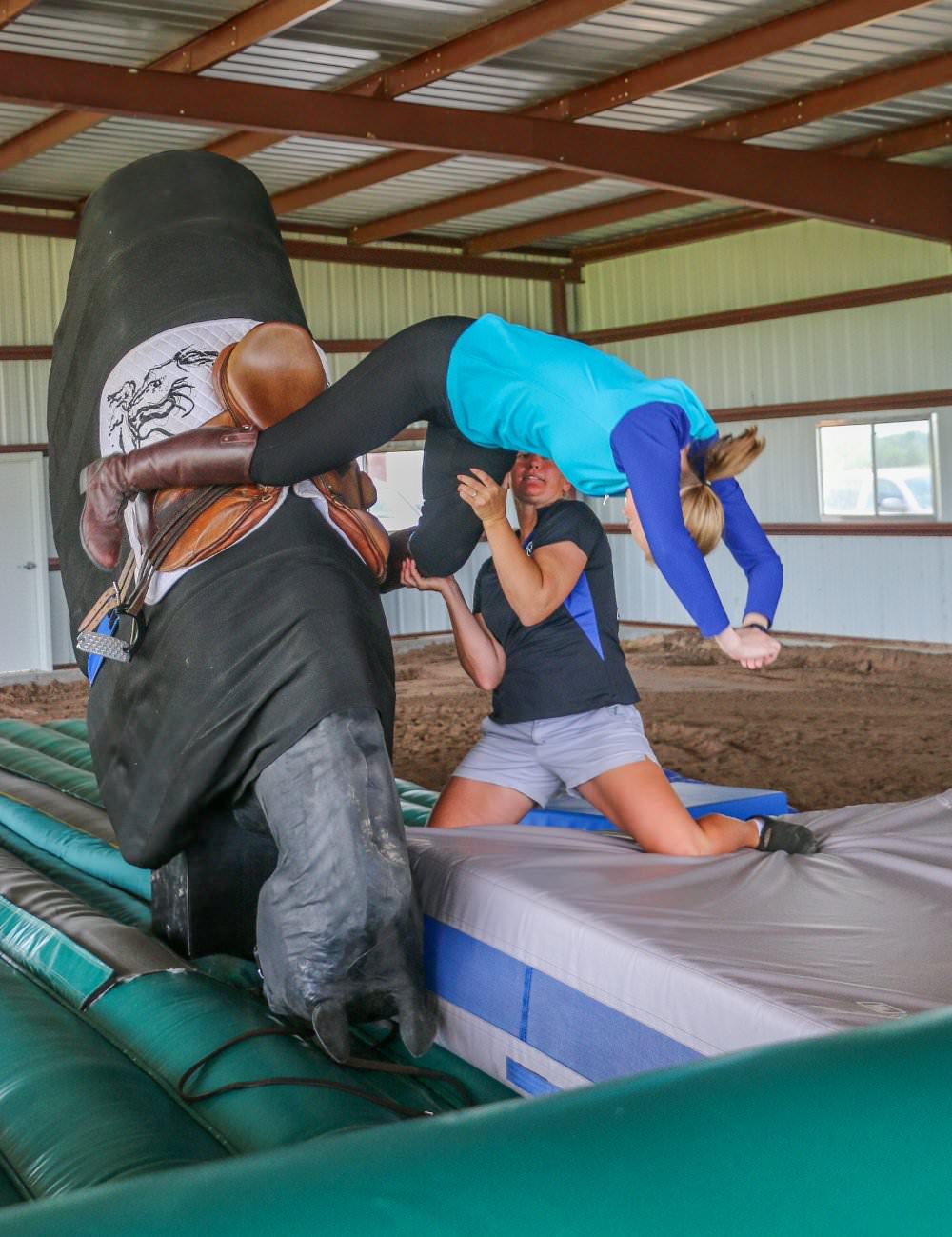
The Warringtons are teaching the $325 two-day program across the country, with a singular goal.
“We want to teach riders that they can influence the outcome of the fall,” says Warrington. “By exiting the dangerous circle of rotation and preparing the body to absorb and dissipate the energy of contacting the ground, riders can reduce the possibility of injury.”
LandSafe training also affects students in an unexpected way.
“When students overcome their fear of falling and replace it with actions they initiate, their overall confidence in riding soars,” says Warrington.
This, in turn, can help reduce the chances of a fall because riders now have a plan, they can control their response, and they know what to expect. Fear of the unknown is replaced with knowledge, which can lead to more effective riding.
After the Fall
Without placing blame, explore possible causes of the fall and lessons learned that you can apply to your next ride.
While the actions that precede some falls happen so quickly and without warning, other issues—like tack failures or environmental influences—can be avoided or addressed. Learn what you can change or anticipate.
Make sure you take care of yourself. Address any medical concerns with your doctor. Even if you walked away with just a bruise, you’ve still had a traumatic incident. Go easy for a few days. Also consider making an appointment with your chiropractor, if you use one. Meeting the ground can move joints out of alignment, and the sooner you address this, the better.
Next, make plans to ride soon. It’s true what they say about getting back on the horse, literally and figuratively. If you find yourself over-faced and you’re dreading or avoiding riding, talk with your trainer or a sports psychologist. Make arrangements to ride a different horse that you can trust to get you back in the saddle.
While we can’t eliminate the risk of falling, taking proactive steps puts us in control of minimizing the risks and improving the outcomes. After all, while falling is an inevitable part of riding, we don’t have to become a member of the frequent flyer club.
Stay safe and enjoy the ride.
For more information on Wendy Murdoch, visit www.wendymurdoch.com. A revised edition of her book, Simplify Your Riding, will be out this fall. For LandSafe Reducing Rider Risk clinic dates and locations, go to www.landsafeequestrian.com.
The author, who thankfully hasn’t come off a horse in a very long time, has come off a concrete wall backwards. She credits her ongoing practice of Aikido for more than 11 years with protecting her in that fall (and others in the real world).
This article originally appeared in the August 2017 issue of Horse Illustrated magazine. Click here to subscribe!



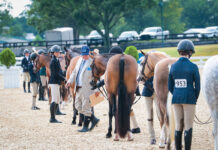

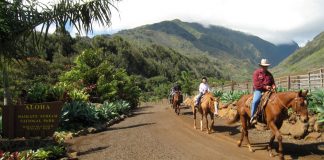

I have seen my daughters and others take a scary fall. This is great stuff to make sure you and your loved ones read! Thank you http://www.equestrianandmore.com